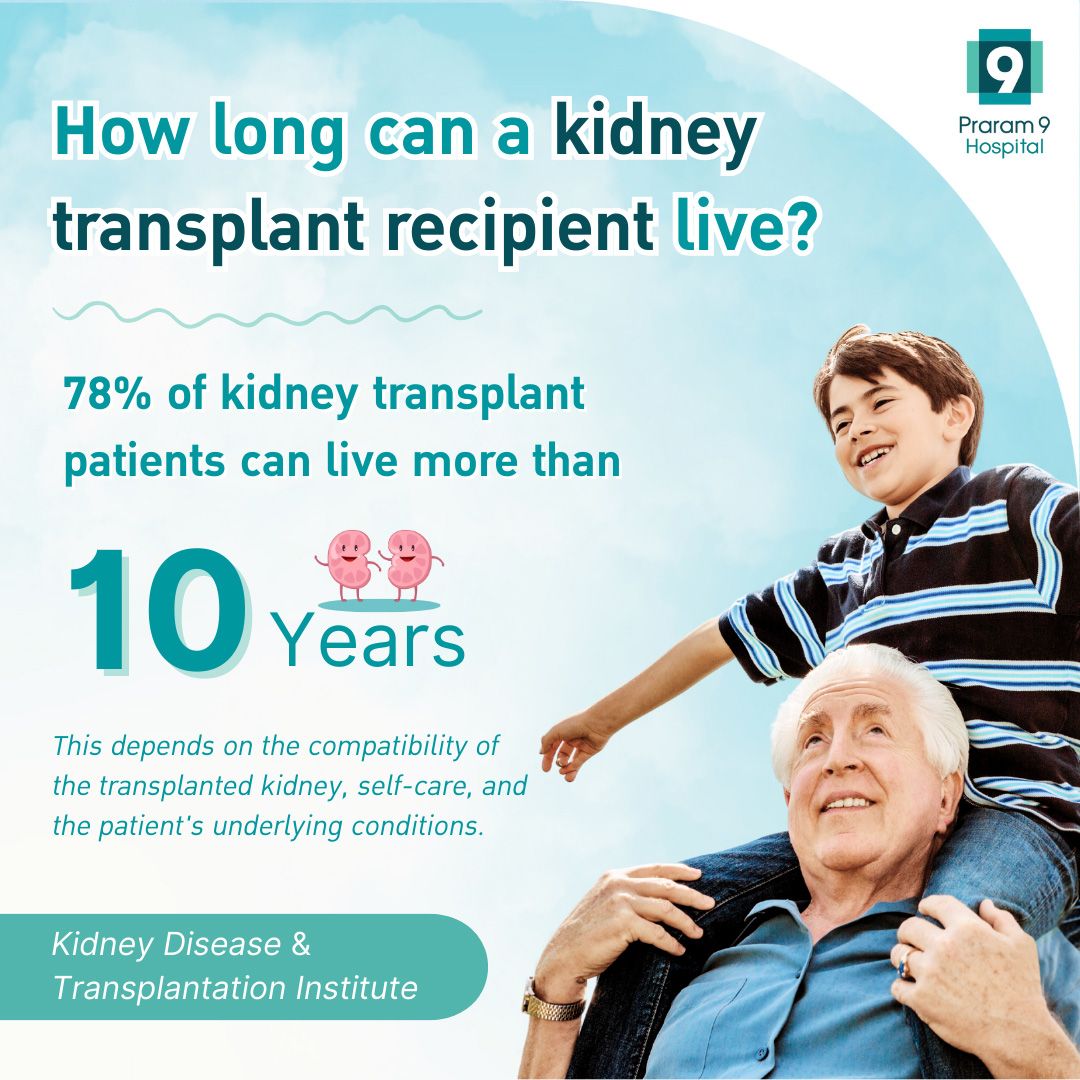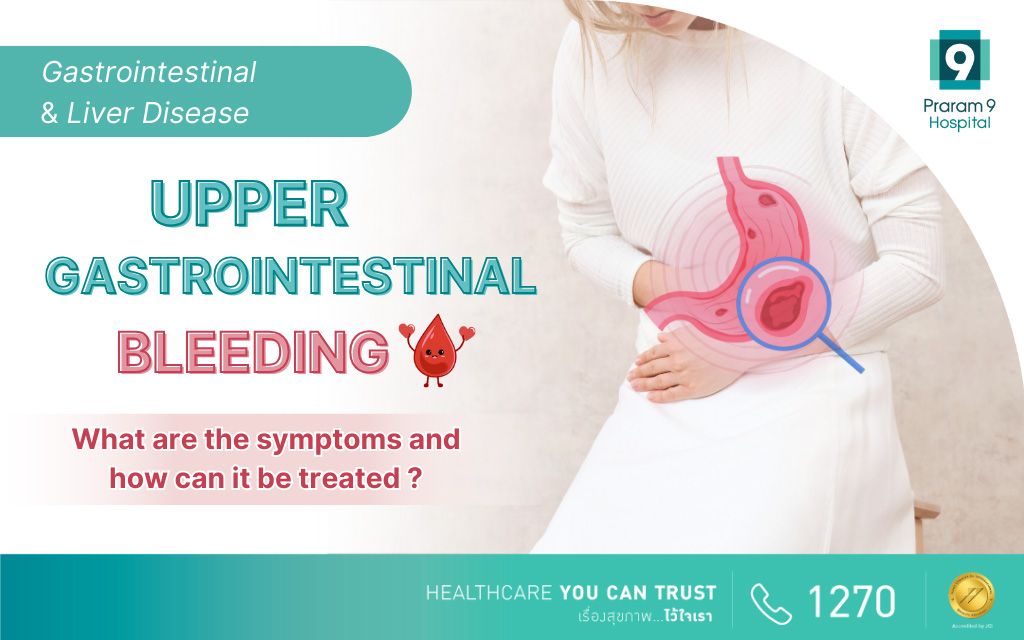Health Articles
Knowledge
How Long Can A Kidney Transplant Recipient Live After Surgery?

The kidneys are vital organs in the body, making kidney disease a significant issue that affects both the patient’s quality of life and the lives of those who care for them. Today, there has been an increase in kidney disease cases compared to the past, with a growing number of patients reaching end-stage chronic kidney failure and requiring urgent treatment. Kidney transplantation is considered the best treatment option for restoring the patient’s quality of life.
Table of contents
- What is Kidney Transplant Surgery?
- How Many Years Can a Patient Live After a Kidney Transplant?
- Who Can Be a Kidney Donor?
- How to Take Care of Yourself After a Kidney Transplant?
- What Can You Eat After a Kidney Transplant?
- Conclusion
What is Kidney Transplant Surgery?
Kidney transplant surgery, also known as kidney transplantation, is a treatment option for end-stage chronic kidney disease in which a functioning kidney is transplanted into the patient. It is currently considered the best treatment for patients with end-stage renal failure because it has a success rate of over 80-90%, depending on the type of kidney received.
Patients who undergo a kidney transplant can return to a normal life with an improved quality of life, comparable to that of healthy individuals. The surgery reduces the risk of infections and complications from dialysis, leading to a longer life expectancy compared to patients who require lifelong dialysis treatments.
How Many Years Can a Patient Live After a Kidney Transplant?
The question of how many years a patient can live after a kidney transplant? is common among those considering the procedure. However, it’s challenging to provide a definitive answer because it depends on various factors, including the compatibility of the transplanted kidney and the patient’s underlying health conditions.
If the kidney comes from a living relative with compatible tissue, the chances of the kidney functioning well and prolonging the patient’s life are higher. On the other hand, if the kidney is from a non-relative or a deceased donor, the success rate might be slightly lower, though it still remains high.
According to data from the Thai Transplantation Society in 2017, 78.2% of kidney transplant patients lived at least 10 years post-transplant. This statistic indicates that out of 100 patients, 78 can expect to live over a decade after receiving a kidney transplant, underscoring the significant success rate of kidney transplants today. However, long-term success also heavily depends on the patient’s commitment to maintaining proper self-care and following medical advice.

Who Can Be a Kidney Donor?
When a nephrologist determines that a chronic kidney disease patient is suitable for a kidney transplant, the donor can come from two main groups:
- Living Donors:
- Family Members: This includes parents, children, or other blood relatives.
- Spouse: The donor can be a legally married spouse or someone in a long-term, publicly acknowledged relationship for at least 3 years before the transplant date. If the couple has children together, the three-year period is not required.
- Deceased Donors: Kidneys from brain-dead donors are often provided through the Red Cross. Before the transplant, compatibility tests are conducted to ensure the blood type and tissue match between the donor and the recipient.
The success rates of kidney transplants vary depending on the type of donor. The order of success rates is as follows:
- Transplants between identical twins have the highest success rate.
- Siblings with matching tissues.
- Parents, children, or siblings with partially matching tissues.
- Non-relatives who are brain-dead donors but have compatible blood and tissue types, which have the lowest, yet still substantial, success rate.
Purchasing kidneys from living individuals who are not relatives is illegal and unethical. The medical community does not accept this practice due to serious ethical, legal, and moral issues, including the risks of coercion, organ theft, or exploitation.
How to Take Care of Yourself After a Kidney Transplant?
Post-transplant care is crucial to ensure the patient can return to a normal life with an improved quality of living. Here are some important guidelines for taking care of yourself after a kidney transplant:
- Medication Management: Patients must take immunosuppressants to prevent organ rejection. These medications reduce the body’s immune response, which increases the risk of infections. Therefore, it’s essential to avoid contact with individuals who are ill.
- Regular Medical Check-ups: Attend all scheduled doctor appointments and seek immediate medical attention if you experience symptoms such as high fever, chills, abnormal urination, pain, redness, or swelling at the surgical site, drainage from the wound, diarrhea, shortness of breath, shingles, or unusual pain in the new kidney area.
- Dietary Guidelines: Eat a balanced diet that includes all food groups, focusing on well-cooked and clean meals. Maintain a healthy weight. Patients with high blood pressure should reduce salt intake, while those with high cholesterol should avoid high-fat foods. Additionally, drink plenty of water.
- Work and Activity: Patients can return to work but should select jobs that align with their health status. Avoid environments that are dirty or damp. If your job involves exposure to unclean conditions, always wear gloves and a mask. Avoid close contact with animals, especially stray ones.
- Hygiene: Wash your hands frequently and prioritize personal hygiene to prevent infections.
- Monitoring for Complications: Be vigilant about other health conditions, such as heart disease or lung issues. Continue to manage any pre-existing conditions like SLE, diabetes, or asthma.
- Physical Activity and Rest: Engage in regular activities but avoid strenuous work. Ensure you get enough rest.
- Travel and Recreation: When traveling, choose clean, safe environments, and ensure there’s easy access to hospitals if needed.
What Can You Eat After a Kidney Transplant?
Post-kidney transplant patients should pay special attention to their diet to avoid putting extra strain on their kidneys, which now have a reduced capacity to balance blood minerals. Here are some dietary recommendations:
- Protein: Patients should consume adequate protein, focusing on high-quality sources such as milk, lean meat, fish, and egg whites. These are high biological value proteins, which are easier for the body to utilize.
- Sodium: For patients advised to limit sodium intake, it’s essential to choose freshly cooked foods and avoid processed, pickled, or semi-prepared foods Additionally, steer clear of MSG and various sauces or dips.
- Potassium: If blood phosphorus levels remain high, avoid foods rich in potassium. These include dark-colored vegetables and fruits such as kale, carrots, spinach, acacia leaves, tomatoes, broccoli, bamboo shoots, pumpkin, durian, bananas, tangerines, papaya, and jackfruit.
- Phosphorus: Patients should avoid high-phosphorus foods, including egg yolks, bony fish, organ meats, insects, processed foods, frozen foods, dried fruits, fast food, milk and dairy products, dark sodas, beer, mineral water, coffee, chocolate, cocoa, yeast, baking powder, pastries, and various nuts.
- Fats: Patients with high cholesterol should control their fat intake by avoiding fried foods, baked goods, and foods high in cholesterol. Late-night eating and alcohol consumption should also be avoided.
By carefully managing these dietary aspects, kidney transplant patients can support their health and improve the longevity of their transplanted kidney.
Conclusion
While kidney transplant surgery is complex, when performed by an expert medical team, such as at the Kidney and Transplant Institute of Praram 9 Hospital, the procedure is highly successful with low risks. Patients can regain a normal life after the transplant.
The longevity and quality of life for kidney transplant patients depend on factors such as their overall health, the type of kidney received, and how well they care for themselves after surgery. With proper self-care, patients can enjoy a long, healthy life, similar to that of others.
Reference: Thai Transplantation Society
Praram 9 hospital is recognized for its Kidney Disease and Transplant institute and has successfully performed over 1,000 kidney transplants, earning Praram 9 hospital as the Top private hospital in Thailand for kidney transplants.
You can consult a doctor from anywhere through video calls.
Our hospital has received the Joint Commission International accreditation (JCI) since 2010 and a special accreditation from JCI for our Kidney Disease and Transplant Institute.














